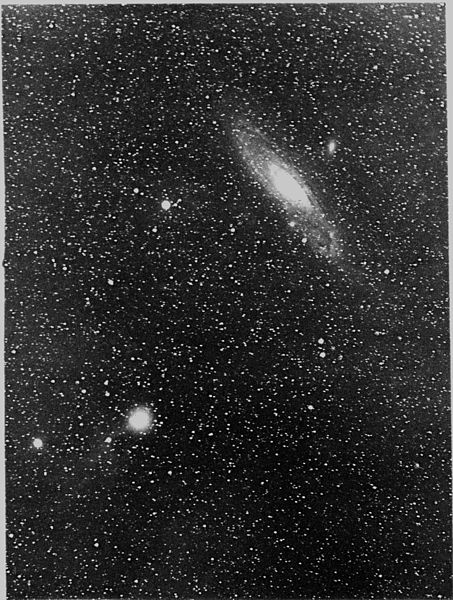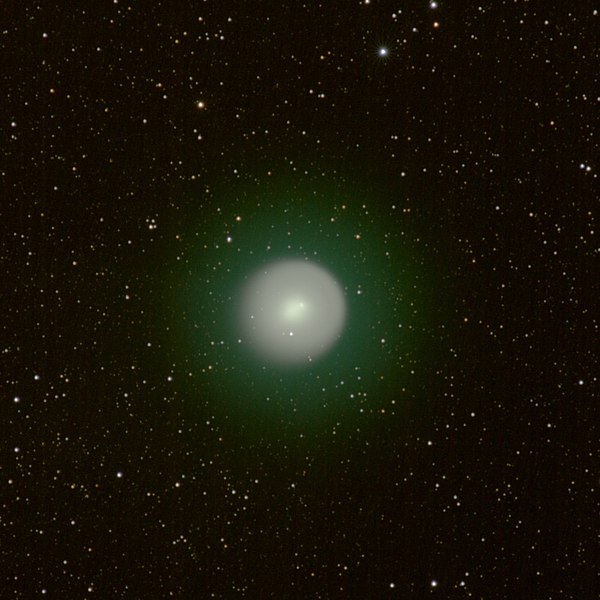Comet Holmes is a periodic comet in the Solar System, discovered by the British amateur astronomer Edwin Holmes on November 6, 1892. Although normally a very faint object, Holmes became notable during its October 2007 return when it temporarily brightened by a factor of a million, in what was the largest known outburst by a comet, and became visible to the naked eye. It also briefly became the largest object in the Solar System, as its coma expanded to a diameter greater than that of the Sun. Between 1857–2106 perihelion remains between 2.05–2.36 AU.
Comet 17P/Holmes and its blue ion tail (taken on November 4, 2007)
10 November 1892, near the Andromeda Galaxy
Comet 17P/Holmes on 2 November 2007
On October 25 the comet looked liked a bright new star in the constellation of Perseus.
The coma is the nebulous envelope around the nucleus of a comet, formed when the comet passes near the Sun in its highly elliptical orbit. As the comet warms, parts of it sublimate; this gives a comet a diffuse appearance when viewed through telescopes and distinguishes it from stars. The word coma comes from the Greek κόμη (kómē), which means "hair" and is the origin of the word comet itself.
Structure of Comet Holmes in infrared, as seen by an infrared space telescope
Comet 17P/Holmes, 2007/11/02
Tempel 1 in X-ray light by Chandra
Artificially colored far-ultraviolet image (with film) of Comet Kohoutek (Skylab, 1973)







